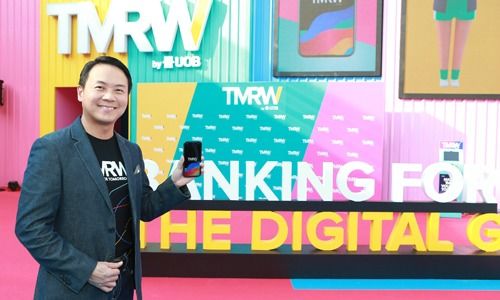UOB's TMRW Sees $10 Billion Market
United Overseas Bank (UOB) has projected an S$10 billion market opportunity in serving Southeast Asia's millennials and hopes that its digital outfit TMRW can capture a meaningful portion.
The bank's S$10 billion projection reflects the lifetime value of young professionals in Southeast Asia (ASEAN), given an expected surge in demand for more complex financial instruments that will ramp up TMRW's asset base. This is likely to happen after five years of transacting with TMRW on plain-vanilla services.
By keeping costs low and sustainable, the bank hopes to grow TMRW's asset base using time. «This is to protect the future of the retail business within UOB, which is why we are very committed to seeing this through even though it's going to take a lot of time,» said group head of TMRW digital group Dennis Khoo, who was quoted in «Business Times»(Behind Paywall).
Expanding In ASEAN
TMRW was launched in Thailand, where UOB is a familiar name after operating there for 16 years. Despite its small market share of less than 5 percent, the business is profitable.
The next country that TMRW is likely to enter will be Indonesia or Vietnam. In these markets, there are still large numbers of unbanked, which regulators are keen to bring into the formal financial system. The digital bank aims to scale with actively engaged customers and recoup total costs from a broader client base of a projected three to five million new customers from this region.
Using Digital Trail Of Customers
UOB's TMRW aims to run at a 35 percent cost-to-income ratio after five years. By combining technology and predictive machine learning into a digital bank built completely from scratch, TMRW can closely track the profitability of the digital trail of its customers, and monitor how this cost-revenue mix will change as a customer becomes more active with the bank.
Fresh statistics from the bank showed that TMRW has gained traction so far. Its annual revenue per active TMRW customer as at end-November jumped 80 percent from March; acquisition cost per active TMRW customer also fell about 70 percent over that same period. The acquisition cost of a customer should not exceed one-third of the projected lifetime value of a customer, Khoo has mentioned at its digital bank launch.
What also drives the data engagement is the use of fintech, which helps to tag and clean the customer's spending and savings data to turn it into useful financial insights that customers can use to rejig their savings and investment habits, Khoo explains.
Partnerships Grew Accounts
Since TMRW started in March last year, its customer accounts have grown 20 percent each month on average from end-March to end-December. It had about 12,000 customers' accounts at the end of March.
TMRW has acquired customers roughly at the rate of 2,000 new customers per month, just via member referral programs with partners such as Grab and Shopee alone. This channel of acquisition is cheaper than Google and Facebook, said Khoo. TMRW now aims this year to gain 4,000 customers per month via member referral programs alone.



























